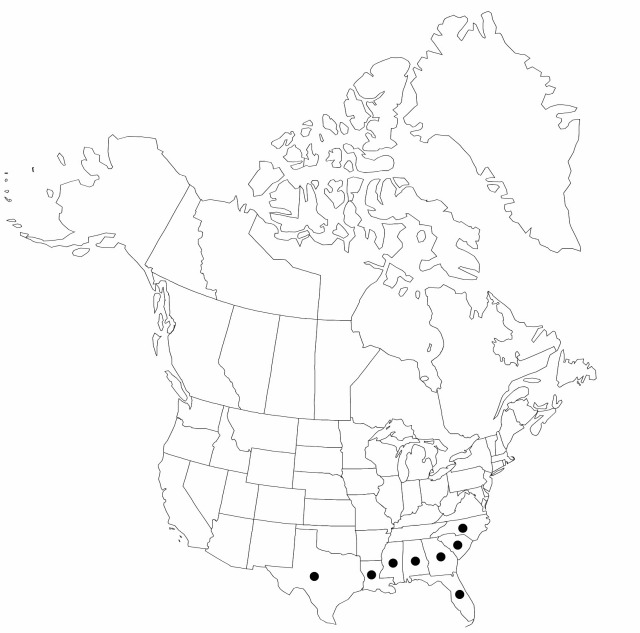Difference between revisions of "Rhynchospora stenophylla"
Fl. South. U.S., 525. 1860.
FNA>Volume Importer |
FNA>Volume Importer |
||
| Line 32: | Line 32: | ||
-->{{#Taxon: | -->{{#Taxon: | ||
name=Rhynchospora stenophylla | name=Rhynchospora stenophylla | ||
| − | |||
|authority=Chapman | |authority=Chapman | ||
|rank=species | |rank=species | ||
| Line 47: | Line 46: | ||
|publication year=1860 | |publication year=1860 | ||
|special status= | |special status= | ||
| − | |source xml=https://jpend@bitbucket.org/aafc-mbb/fna-data-curation.git/src/ | + | |source xml=https://jpend@bitbucket.org/aafc-mbb/fna-data-curation.git/src/f50eec43f223ca0e34566be0b046453a0960e173/coarse_grained_fna_xml/V23/V23_385.xml |
|genus=Rhynchospora | |genus=Rhynchospora | ||
|species=Rhynchospora stenophylla | |species=Rhynchospora stenophylla | ||
Revision as of 20:07, 16 December 2019
Plants perennial, densely cespitose, 30–60(–90) cm; rhizomes forking, compact. Culms lax, leafy toward base, filiform, ± terete. Leaves ascending, exceeded by culm; blades filiform, to 0.5 mm, margins mostly involute, apex trigonous, tapering. Inflorescences mostly lax cymes or clusters of cymes, 1–2, sparse, turbinate, branches capillary; leafy bracts setaceous, exceeding proximal cymes, shorter than, equaling or slightly exceeding distal cymes. Spikelets redbrown, fusiformlanceoloid, 5 mm, apex acute; fertile scales lanceolate, 3.5–4.5 mm, apex acute or acuminate, midrib included or shortexcurrent. Flowers: perianth bristles 6, exceeding tubercle base, antrorsely barbellate, basally setose. Fruits 1 per spikelet, 2.8–3 mm; body pale brown, obovoidpyriform, tumidly lenticular, 1.5–1 × 1 mm; surfaces transversely wavyrugose, intervals vertically striate with narrow, raised alveolae; tubercle flat, narrowly triangular-subulate, (0.8–)1–1.5 mm.
Phenology: Fruiting spring–summer.
Habitat: Sands and peats of bogs, seeps, pond shores, flatwoods, and savannas
Elevation: 0–200 m
Distribution

Ala., Fla., Ga., La., Miss., N.C., S.C., Tex.
Discussion
Rhynchospora stenophylla may occasionally be confused with the closely related R. rariflora but can be distinguished by its taller and wispier habit, its longer spikelets of narrower outline, and the distinctly longer fruit tubercle. Both species are usually found on wet substrates; R. stenophylla typically is found in the deepest bogs and sphagnous seeps.
Selected References
None.
